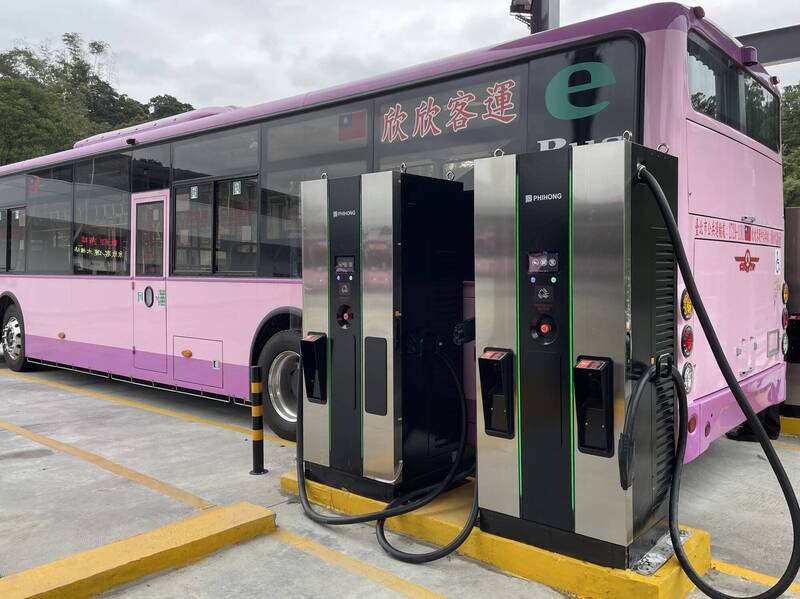The first electric bus fast-charging station in Taipei is located at the dispatching station of Shinshin Passenger Bus Muzha 2nd Station. It can be charged to 80% in 20 minutes.
(Provided by Beishi Public Transport Office)
[Reporter Cai Yahua/Taipei Report] The Taipei City Government has decided to fully electrify buses by 2030. There are currently 17 routes and 348 electric buses, and the number will reach 650 by the end of this year. The Taipei City Public Transportation Department said today that the first electric bus in Taipei The fast-charging charging station is located at the dispatching station of Xinxin Bus Muzha Second Station. It was opened in February, and the battery can be charged to 80% in 20 minutes. At the same time, it serves as a shared charging field and provides charging seats for other passenger transport operators.
The Department of Public Transport pointed out that there are 27 electric buses approved on the main line of Roosevelt Road, equipped with intelligent equipment, such as ADAS system, lane departure warning, forward collision warning, blind spot warning of driving vision, etc., and maintain night bus frequency to take care of late passengers, Reduce the impact on residents along the line, connect Taipei Main Station, National Taiwan University Hospital, mansions, and the municipal zoo, etc., with 120 transfer routes.
Please read on...
Xinxin Bus, which operates the main line of Roosevelt Road, is gradually introducing electric buses. The first batch of new buses will go online on February 24, and it is expected that the entire line will be electrified by the end of March.
Zhang Yuanbang, Section Chief of the Public Transport Department, pointed out that it takes 4 to 6 hours for an electric bus to be fully charged on average, and the charging field of the fast charging system is introduced at the Muzha Second Station, and the battery can be charged from 20% to 80% in 15 to 20 minutes , reduce the waiting time for charging, and improve the efficiency of vehicle use without affecting the original vehicle scheduling and manual work habits.
The Public Transport Office stated that Xinxin Passenger Transport Muzha Second Station also cooperates with the central policy as a shared charging site, and reserves charging seats for shared use by peers. The charging piles are equipped with the CCS1 interface currently used by most electric buses. Demand can be charged at the nearest location in real time, similar to the concept of a gas station, with a resource sharing model to enhance convenience and reduce operating costs for operators.
